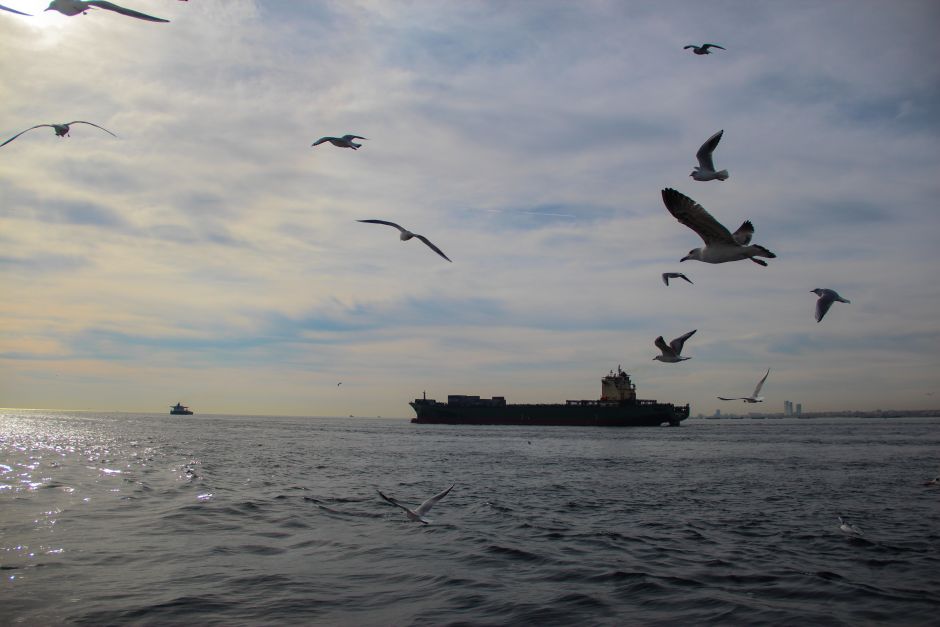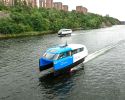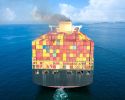Research and innovation important in Swedish authorities' strategy for fossil-free transport

By 2030, greenhouse gas emissions from the transport sector should have been reduced by 70 percent, and the sector should be completely climate neutral by 2045. In order to reach those goal, six authorities have conducted a strategic plan that has been handed over to the Swedish government. The plan proposes, among other things, to investigate the need for increased government research funding aimed at shipping and the need for a specific research and innovation program for energy efficient and fossil-free shipping.
In the appropriation directions for 2016, the Swedish Energy Agency was commissioned to coordinate the transformation of the transport sector to become fossil free. The agency together with Boverket (National Board of Housing, Building and Planning), the Swedish Environmental Protection Agency, Transport Analysis, the Swedish Transport Agency and the Swedish Transport Administration has now developed a strategic plan that includes measures that will contribute to meeting Sweden's climate policy goal of reducing greenhouse gas emissions from the transport sector by at least 70 percent between 2010 and 2030 and the target for climate neutrality by 2045 at the latest.
"In order to be able to achieve the set goals, we need solutions that doesn’t exist today, such as new technology, new transport behaviour, new fuels, new materials, and here, research and innovation will play a crucial role, Åsa Burman, Director Lighthouse says.
Research and knowledge needed
Under the headline "Research and collaboration for a fossil-free shipping", the authorities write:
"There are a number of technical, operational and structural measures that can be taken together with renewable fuels to reduce shipping energy use and to enable shipping transition to become fossil free. However, more research and knowledge is needed to create new solutions and to understand how the actions work in combination with each other. A review of how the government research funding for shipping can be targeted and adapted to more clearly control fossil freedoms should therefore be carried out where funding for research into energy efficiency and fossil-free shipping should be increased and collected in a specific research and innovation program. In order for the research and knowledge of public and private actors to be marketed and implemented on a broad front, cooperation between and within the shipping industry is important. Continued funding of existing and potential cooperation platforms is important for strengthening cooperation between and within the shipping industry, public actors and academics. "
- From the perspective of Lighthouse and the maritime sector, the need for expanded research funds and targeted R & D programs has been obvious for a long time. It is gratifying that the authorities now address the issue, even though we had wished that R&D programs had already been in place”, Åsa Burman says.
Identified challenges
In the strategic plan, the authorities have primarily identified challenges that the state should prioritize in the next two to three years, and the strategy lists a series of commitments and proposals under the headings; Social planning, economic instruments, administrative instruments, information and knowledge, research and innovation, international work as well as coordination and cooperation.
Twelve actions and proposals concern shipping directly, these are:
- Examine how the design of port charges can be controlled to promote the transfer of goods, from land to sea, and vessels with low climate and environmental impact
- Investigate opportunities to provide investment support in the form of a State Risk Discovery Fund, which can be used as a guarantee for shipping companies and ports for investments in technology to reduce climate impact from shipping
- Investigate opportunities to create a CO2 fund, wholly or partly financed by the industry itself, to support investments in technologies to reduce climate impact on shipping
- Investigate investment support for increased production of renewable fuels
- Investigate the instruments and measures that can promote the use of renewable fuels by shipping, including accessibility to renewable fuels infrastructure for shipping
- Extend the tax cuts for land based electricity in ports after 2020
- Introduce tax reduction for land based electricity in ports for ships with gross tonnage of less than 400, and for charging batteries for electric boats and for direct transmission of electricity to cable ferries
- Investigate how fares can provide greater climate and environmental benefits through, for example, a differentiation of charges based on shipping climate and environmental impact.
- Climate requirements for procurement of road ferries
- Review the state research funds for shipping and the need for a specific research and innovation program for energy efficient and fossil-free shipping. The review should also decide whether the funds for research for fossil-free shipping should increase. Continued financial support from existing and potential cooperation platforms is needed to strengthen cooperation between shipping industry, public actors and academics.
- Sweden should actively promote an international goal of reducing shipping climate impact and that further international instruments are rapidly coming into place
- Carry out the issue of consensus on the environmental and climate impacts of ships on an international basis, with the aim of ensuring that national and global instruments can be environmentally differentiated based on the same criteria throughout the world
The plan also proposes that the measures and proposals to be monitored continuously using control stations and indicators so that the efforts can be adjusted based on the outside world's development.
Read the full report here (in Swedish): http://www.energimyndigheten.se/nyhetsarkiv/2017/strategisk-plan-for-hur...
Facts about the goals of Sweden's climate policy framework:
By 2045, Sweden will not have any net greenhouse gas emissions to the atmosphere, and then achieve negative emissions. Emissions from operations in Swedish territory should be at least 85 percent lower than 1990 emissions. In order to achieve net zero emissions, additional measures may be taken into account. This could include increased carbon dioxide uptake in forests and land as well as investments in other countries.
Targets for 2030 and 2040 are set to ensure that the long-term goal of 2045 is achieved. Emissions from domestic transport, excluding domestic flights, should decrease by at least 70 percent by 2030 compared with 2010. The reason that domestic flights are not included in the target is that domestic flights are included in the EU Emissions Trading System.
-
 NextWave – en podd som ska locka unga
NextWave – en podd som ska locka unga -
 Ny studie: Eldrivna pendelbåtar kan effektivisera Stockholms kollektivtrafik
Ny studie: Eldrivna pendelbåtar kan effektivisera Stockholms kollektivtrafik -
 Sjöfartens utsläpp ökar
Sjöfartens utsläpp ökar -
 Sociala relationer påverkar val av bränsle
Sociala relationer påverkar val av bränsle -
 Sjöfartens omställning kräver ”mjukare” påtryckningar
Sjöfartens omställning kräver ”mjukare” påtryckningar -
 Hon hade avtalad tid med Kapten ynkrygg
Hon hade avtalad tid med Kapten ynkrygg -
 Lighthouse omvärldsanalys 2025 – osäkerhet och tullar präglar sjöfarten
Lighthouse omvärldsanalys 2025 – osäkerhet och tullar präglar sjöfarten -
 Se seminariet Shipping in the Marine Environment
Se seminariet Shipping in the Marine Environment -
 Vad betyder egentligen de 90 procenten?
Vad betyder egentligen de 90 procenten? -
 Hålla där...
Hålla där...

